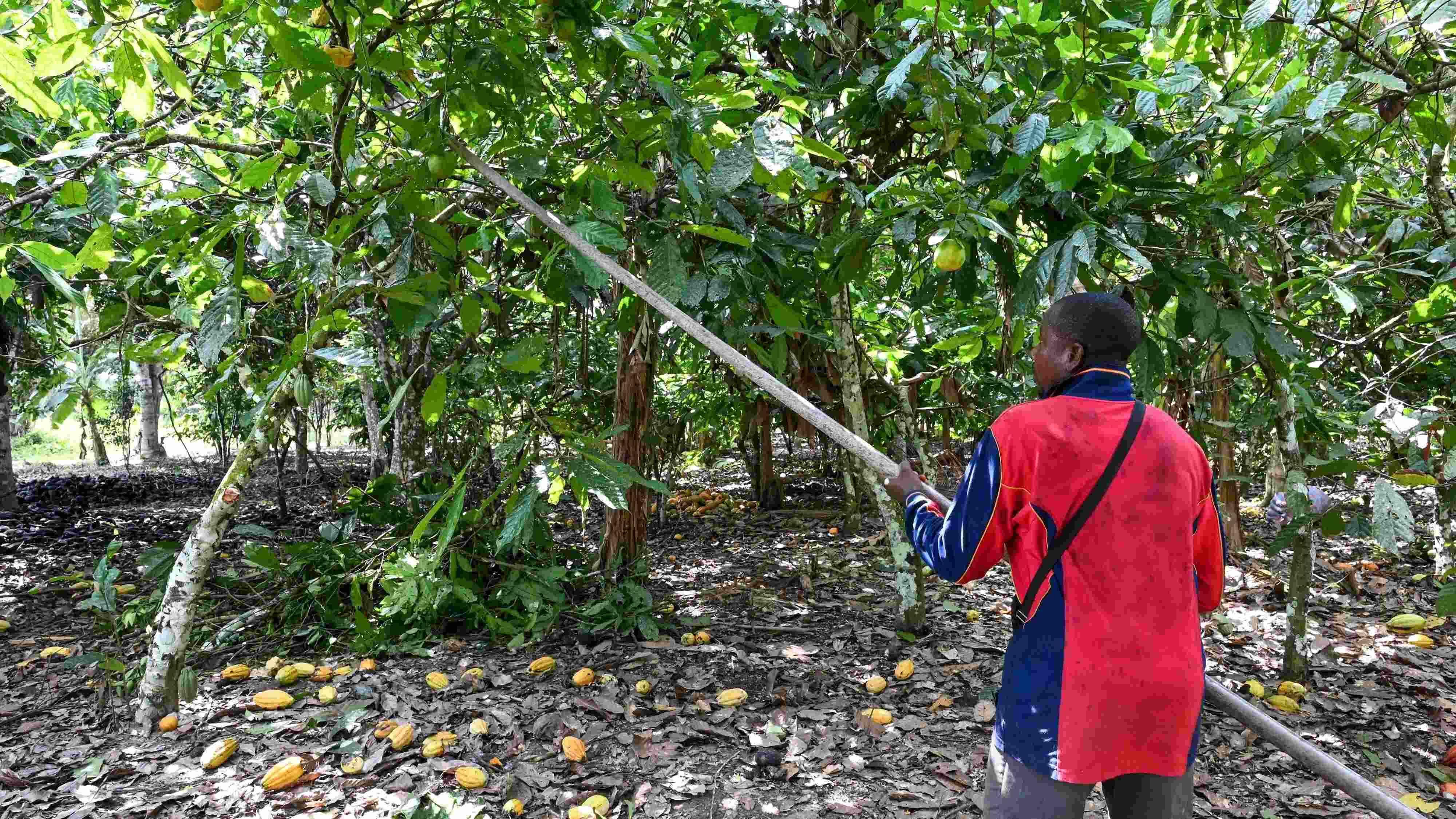Top producer Ivory Coast fears for cocoa output after rains
ABIDJAN

"Thirty years I've been in cocoa - and this is the worst season yet," said Siaka Sylla as he contemplated an almost empty warehouse at his cooperative in Ivory Coast, the world's top producer of the bean.
Following exceptionally heavy rain, this year's overall harvest of cocoa, used to manufacture chocolate, is set to be very low. The crop is harvested twice annually - October to March for the main crop and a May to August mid-crop.
On a hot November morning, a squad of trucks arrived from the plantations to drop off a few dozen bags of beans at the Scappen cooperative in the village of Hermankono, near the central southern town of Divo, some 200 kilometers from the economic capital Abidjan.
"It's rained too much this year. Usually at this time, trucks are queueing up to unload. Here, we have barely 200 bags whereas we could stock 10 times as many," complained Sylla, chairman of the cooperative grouping some 1,500 planters.
He expects harvest volume to drop some three to four times on last year's.
A look in the fields nearby suggests that fear is well-founded. And Analysts confirm as much.
"Traders are worried about another short production year and these feelings have been enhanced by El Nino that could threaten West Africa crops with hot and dry weather later this year," said Jack Scoville of Price Futures Group.
The analyst warned of "tight supplies" amid "more reports of reduced arrivals in Ivory Coast and Ghana," the number two global producer.
July was a particularly rainy month in Ivory Coast's south, just as the cocoa plants were flowering.
As a result, "the flowers fell," the farm worker said as he explained his meagre harvest.
Of those cocoa pods which resisted, some rotted anyway in the excessive humidity.
Some areas have seen rainfall this year between 20 and even 40 percent above the 1991-2020 norm.
To blossom fully, cocoa needs a subtle alternation between sunshine and rain.
"We'd forecast a 20 percent drop on last year and our forecasts are confirmed. With the heavy rains, many pods have rotted," Yves Brahima Kone, who heads Ivorian regulator the Coffee-Cocoa Council (CCC), told AFP.
With a 40 percent share of global supply, Ivory Coast is the world's top producer ahead of neighbouring Ghana, whose production has recently suffered from cocoa swollen shoot virus disease, as well as illegal mining on some cocoa farms.
Anticipating a poor crop, Ivory Coast suspended export contracts - some two-thirds of produce usually goes to the EU - back in July.
As a result of that move, cocoa prices have soared on commodity markets beyond $4,000 a tonne in New York, a level not seen in more than four decades, since 1978.
















